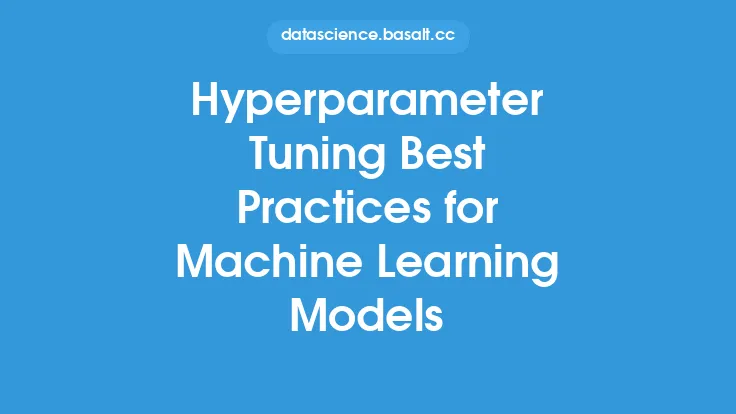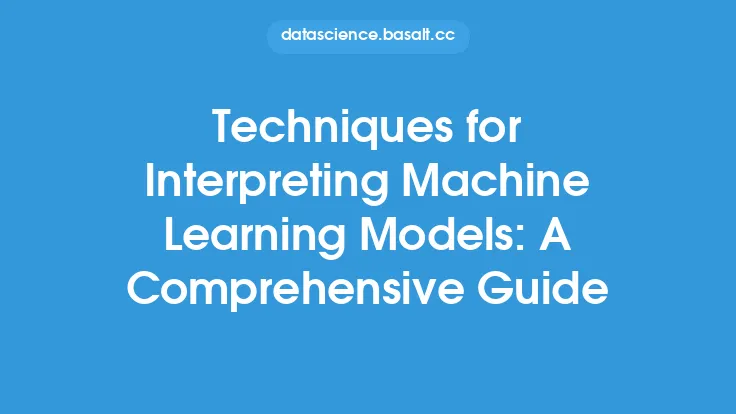Machine learning models are only as good as the parameters that govern their behavior. While model parameters are learned from the data during training, hyperparameters are set before training and have a significant impact on the model's performance. Hyperparameter tuning is the process of selecting the optimal hyperparameters for a machine learning model. In this article, we will delve into the world of hyperparameter tuning, exploring its importance, types of hyperparameters, and the challenges associated with tuning them.
What are Hyperparameters?
Hyperparameters are parameters that are set before training a machine learning model. They are not learned from the data like model parameters, but rather are specified by the user or learned through a separate process. Hyperparameters can be thought of as the "knobs" that control the behavior of a machine learning model. Examples of hyperparameters include the learning rate, regularization strength, and number of hidden layers in a neural network. The choice of hyperparameters has a significant impact on the model's performance, and finding the optimal set of hyperparameters is crucial for achieving good results.
Types of Hyperparameters
There are several types of hyperparameters that can be tuned in a machine learning model. These include:
- Model hyperparameters: These are hyperparameters that control the architecture of the model, such as the number of hidden layers, the number of units in each layer, and the activation functions used.
- Regularization hyperparameters: These are hyperparameters that control the amount of regularization applied to the model, such as the strength of L1 or L2 regularization.
- Optimization hyperparameters: These are hyperparameters that control the optimization algorithm used to train the model, such as the learning rate, momentum, and batch size.
- Data hyperparameters: These are hyperparameters that control the preprocessing and augmentation of the data, such as the amount of noise added to the data or the number of data augmentation iterations.
Challenges of Hyperparameter Tuning
Hyperparameter tuning is a challenging task due to the large number of possible hyperparameter combinations and the computational cost of training a model for each combination. Some of the challenges associated with hyperparameter tuning include:
- High dimensionality: The number of hyperparameters can be very large, making it difficult to search the entire space of possible combinations.
- Computational cost: Training a model for each hyperparameter combination can be computationally expensive, especially for large datasets and complex models.
- Noise in the objective function: The performance of a model on a given set of hyperparameters can be noisy, making it difficult to determine the optimal set of hyperparameters.
- Multiple local optima: The hyperparameter space can have multiple local optima, making it difficult to find the global optimum.
Hyperparameter Tuning Strategies
Despite the challenges associated with hyperparameter tuning, there are several strategies that can be used to find the optimal set of hyperparameters. These include:
- Grid search: This involves searching the entire space of possible hyperparameter combinations using a grid search algorithm.
- Random search: This involves randomly sampling the space of possible hyperparameter combinations.
- Bayesian optimization: This involves using a probabilistic approach to search the space of possible hyperparameter combinations.
- Gradient-based optimization: This involves using gradient-based optimization algorithms to search the space of possible hyperparameter combinations.
Hyperparameter Tuning Tools and Libraries
There are several tools and libraries available that can be used to perform hyperparameter tuning. These include:
- Scikit-learn: This is a popular machine learning library for Python that includes tools for hyperparameter tuning.
- Hyperopt: This is a Python library that provides a simple and efficient way to perform hyperparameter tuning.
- Optuna: This is a Python library that provides a Bayesian optimization approach to hyperparameter tuning.
- TensorFlow: This is a popular deep learning library that includes tools for hyperparameter tuning.
Conclusion
Hyperparameter tuning is a crucial step in the machine learning workflow. By selecting the optimal set of hyperparameters, it is possible to significantly improve the performance of a machine learning model. While hyperparameter tuning can be a challenging task, there are several strategies and tools available that can be used to find the optimal set of hyperparameters. By understanding the importance of hyperparameter tuning and the challenges associated with it, it is possible to develop effective hyperparameter tuning strategies that can be used to improve the performance of machine learning models.





